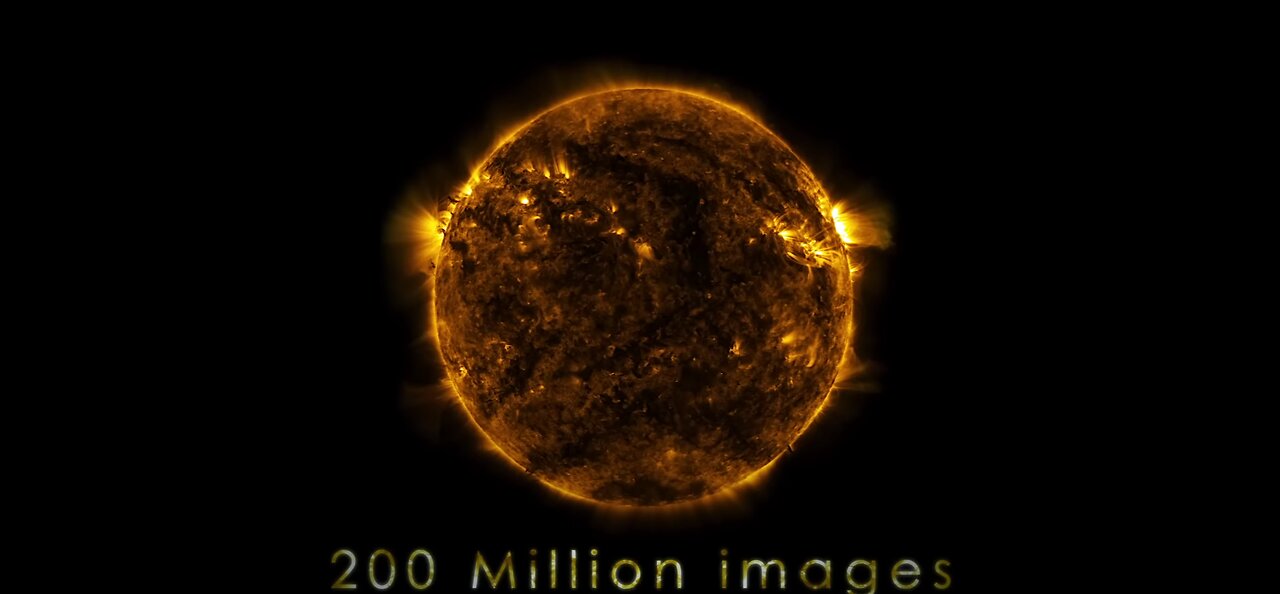Premium Only Content

NASA | SDO: Year 5
February 11, 2015 marks five years in space for NASA's Solar Dynamics Observatory, which provides incredibly detailed images of the whole sun 24 hours a day. Capturing an image more than once per second, SDO has provided an unprecedentedly clear picture of how massive explosions on the sun grow and erupt ever since its launch on Feb. 11, 2010. The imagery is also captivating, allowing one to watch the constant ballet of solar material through the sun's atmosphere, the corona.
In honor of SDO's fifth anniversary, NASA has released a video showcasing highlights from the last five years of sun watching. Watch the movie to see giant clouds of solar material hurled out into space, the dance of giant loops hovering in the corona, and huge sunspots growing and shrinking on the sun's surface.
The imagery is an example of the kind of data that SDO provides to scientists. By watching the sun in different wavelengths – and therefore different temperatures – scientists can watch how material courses through the corona, which holds clues to what causes eruptions on the sun, what heats the sun's atmosphere up to 1,000 times hotter than its surface, and why the sun's magnetic fields are constantly on the move.
Five years into its mission, SDO continues to send back tantalizing imagery to incite scientists' curiosity. For example, in late 2014, SDO captured imagery of the largest sun spots seen since 1995 as well as a torrent of intense solar flares. Solar flares are bursts of light, energy and X-rays. They can occur by themselves or can be accompanied by what's called a coronal mass ejection, or CME, in which a giant cloud of solar material erupts off the sun, achieves escape velocity and heads off into space. In this case, the sun produced only flares and no CMEs, which, while not unheard of, is somewhat unusual for flares of that size. Scientists are looking at that data now to see if they can determine what circumstances might have led to flares eruptions alone.
Goddard built, operates and manages the SDO spacecraft for NASA's Science Mission Directorate in Washington, D.C. SDO is the first mission of NASA's Living with a Star Program. The program's goal is to develop the scientific understanding necessary to address those aspects of the sun-Earth system that directly affect our lives and society.
-
 LIVE
LIVE
LadyDesireeMusic
1 hour agoLive Piano & Convo - Rumble Rants and Sub Request
273 watching -
 1:10:27
1:10:27
Chad Prather
17 hours agoThe Secret To Pleasing The Lord Over Man!
55.1K47 -
 LIVE
LIVE
LFA TV
12 hours agoLIVE & BREAKING NEWS! | THURSDAY 11/6/25
4,040 watching -
 52:16
52:16
American Thought Leaders
19 hours agoIs There a Link Between Mass Shootings and SSRIs?
46.6K58 -
 17:12
17:12
World2Briggs
20 hours ago $0.07 earnedTop 10 Towns You Can Retire or Live on $1900 a month in the Midwest #1
33.2K25 -
 17:25
17:25
BlackDiamondGunsandGear
1 day agoCustom Building the Cheapest MP5
41.1K2 -
 2:07:20
2:07:20
BEK TV
1 day agoTrent Loos in the Morning - 11/06/2025
39.4K1 -
 8:10
8:10
The Shannon Joy Show
20 hours agoShould we even VOTE anymore?
38.2K47 -
 59:34
59:34
Dialogue works
1 day ago $0.03 earnedMohammad Marandi: It’s WAR: Iran’s Supreme Defense Council ACTIVATES –Hezbollah REFUSES to Surrender
71.3K14 -
 10:23
10:23
TheSaltyCracker
20 hours agoMuslims Immediately Threaten New Yorkers After Zohran Win
70.8K493